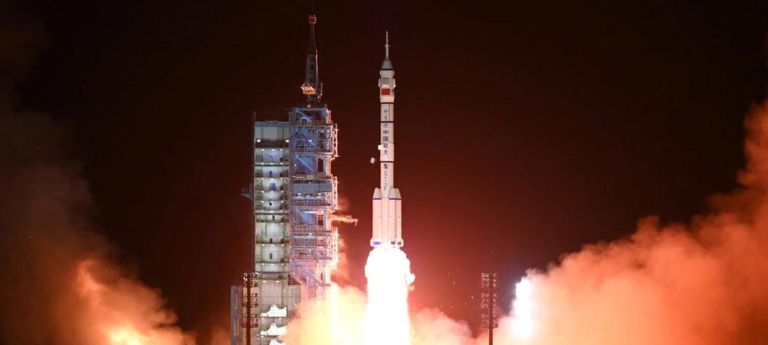BEIJING: According to the state news agency Xinhua, Chinese astronauts completed the country’s first-ever crew handover in orbit on Wednesday when they arrived at the Tiangong space station.
According to Xinhua, citing the China Manned Space Administration (CMSA), the trio launched from the Jiuquan launch center in the Gobi desert in the northwest of China at 11:08 p.m. (1508 GMT).
The agency informed Xinhua that the vessel, which was carrying veteran Fei Junlong and first-time astronauts Deng Qingming and Zhang Lu, successfully docked with the station early Wednesday.
The three other astronauts who had been on the Tiangong space station since the beginning of June were then added to their group.
After 17 years in space, Fei, 57, is commanding the Shenzhou-6 mission in 2005.
Read More: NASA Orion Spacecraft Enters Lunar Orbit: Officials
According to CMSA spokesperson Ji Qiming, the mission’s primary responsibilities included “achieving the first crew handover in orbit,” “installing… equipment and facilities inside and outside the space station,” and “carrying out scientific experiments.”
“The Shenzhou-15 crew are planning to return to China’s Dongfeng landing site in May next year,” reads the statement. “During the stay, the Shenzhou-15 crew will welcome the visiting Tianzhou-6 cargo ship and hand over (operations) to the Shenzhou-16 manned spaceship.”
The Tiangong space station is the crown gem of Beijing’s aggressive space program — which has landed mechanical meanderers on Mars and the Moon and made the country the third to place people in a circle — as it hopes to find the US and Russia.
Tiangong’s last module effectively docked with the center construction recently, state media said — a key stage in its finishing by the end of the year.
According to independent Chinese space analyst Chen Lan, “I expect that China will declare construction completion during or at the end of the Shenzhou-15 mission.”
Read More: Punjab Becomes First Province To Reach Web 3.0
Since 2011, when the United States of America prohibited NASA from interacting with China, the country has been excluded from the International Space Station.
The Tiangong space station is expected to weigh 90 tonnes when it is finished, which is about a quarter of the ISS. It will also be about the same size as the Soviet-built Mir station, which orbited Earth from 1980 to 2001.
Tiangong, which translates to “heavenly palace,” will house a variety of experiments in near-zero gravity for approximately a decade.
The Xuntian space telescope, which Beijing plans to launch next year, will have a field of view 350 times larger than that of NASA’s Hubble Space Telescope.





